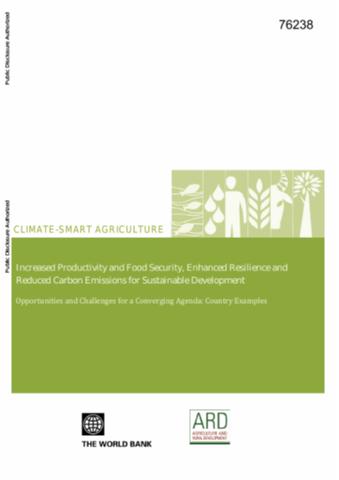Resource information
The purpose of this paper is to summarize the challenges and the practical successes that a selected number of countries are experiencing in moving towards 'climate-smart' agriculture while also meeting the food requirements of a growing population, broader economic development and green growth objectives. It complements papers prepared in 2010 on technologies and policy instruments, research, and farmers' perspectives. The paper is also intended to provide a broad country perspective to two additional papers produced for a meeting of African Ministers of Agriculture which took place in Johannesburg in September 2011. The main conclusion is that a number of countries have made impressive progress in integrating 'climate-smart agriculture' into broader development and growth programs. Several countries are supporting policy measures and programs to conserve soil and moisture while enhancing productivity and competitiveness, and are addressing the particular concerns of drought-prone semi-arid areas. They are improving agricultural water management and watershed management, and addressing sea-surges, salinity and coastal flooding. Some countries are also including climate-smart agriculture as a core element in broader green growth agendas. The private sector has a key role to play in climate-smart agriculture, especially where the enabling environment has been favorable. Achieving climate-smart agriculture needs an integrated approach, tackling productivity and food security, risk and resilience, and low carbon growth together, but integration and institutional coordination remains a challenge in many countries.


